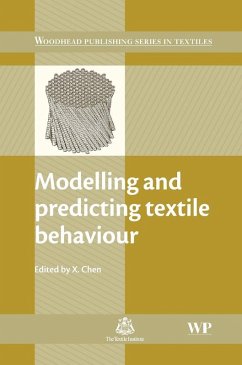The textile industry can experience a vast array of problems. Modelling represents a group of techniques that have been widely used to explore the nature of these problems, it can highlight the mechanisms involved and lead to predictions of the textile behaviour. This book provides an overview of how textile modelling techniques can be used successfully within the textile industry for solving various problems.
The first group of chapters reviews the different types of models and methods available for predicting textile structures and behaviour. Chapters include modelling of yarn, woven and nonwoven materials. The second group of chapters presents a selection of case studies, expressing the strengths and limitations and how various models are applied in specific applications. Case studies such as modelling colour properties for textiles and modelling, simulation and control of textile dyeing are discussed.
With its distinguished editor and international range of contributors, Modelling and predicting textile behaviour is essential reading material for textile technologists, fibre scientists and textile engineers. It will also be beneficial for academics researching this important area.
The first group of chapters reviews the different types of models and methods available for predicting textile structures and behaviour. Chapters include modelling of yarn, woven and nonwoven materials. The second group of chapters presents a selection of case studies, expressing the strengths and limitations and how various models are applied in specific applications. Case studies such as modelling colour properties for textiles and modelling, simulation and control of textile dyeing are discussed.
With its distinguished editor and international range of contributors, Modelling and predicting textile behaviour is essential reading material for textile technologists, fibre scientists and textile engineers. It will also be beneficial for academics researching this important area.
- Provides an overview of the different types of models and methods that can be used successfully within the textile industry
- Reviews the structural hierarchy in textile materials fundamental to the modelling of textile fibrous structures
- Assesses the strengths and weaknesses of different textile models and how specific models are applied in different situations
Dieser Download kann aus rechtlichen Gründen nur mit Rechnungsadresse in A, B, BG, CY, CZ, D, DK, EW, E, FIN, F, GR, HR, H, IRL, I, LT, L, LR, M, NL, PL, P, R, S, SLO, SK ausgeliefert werden.


